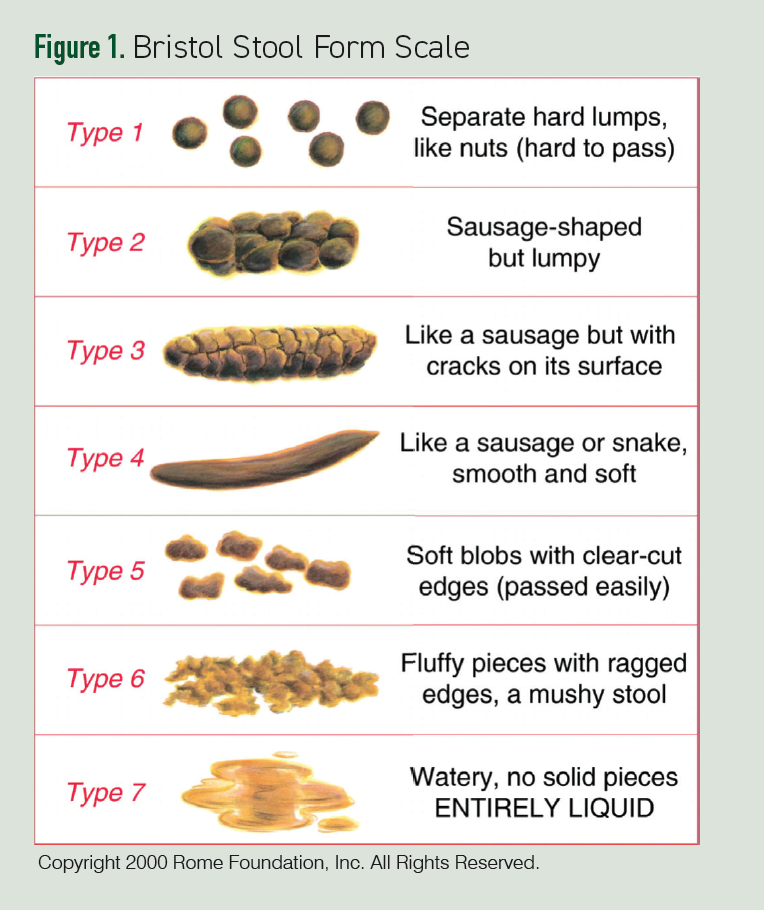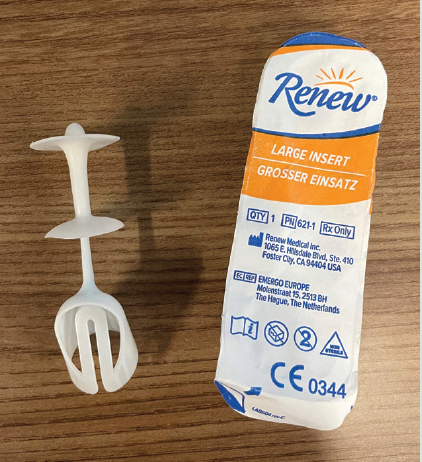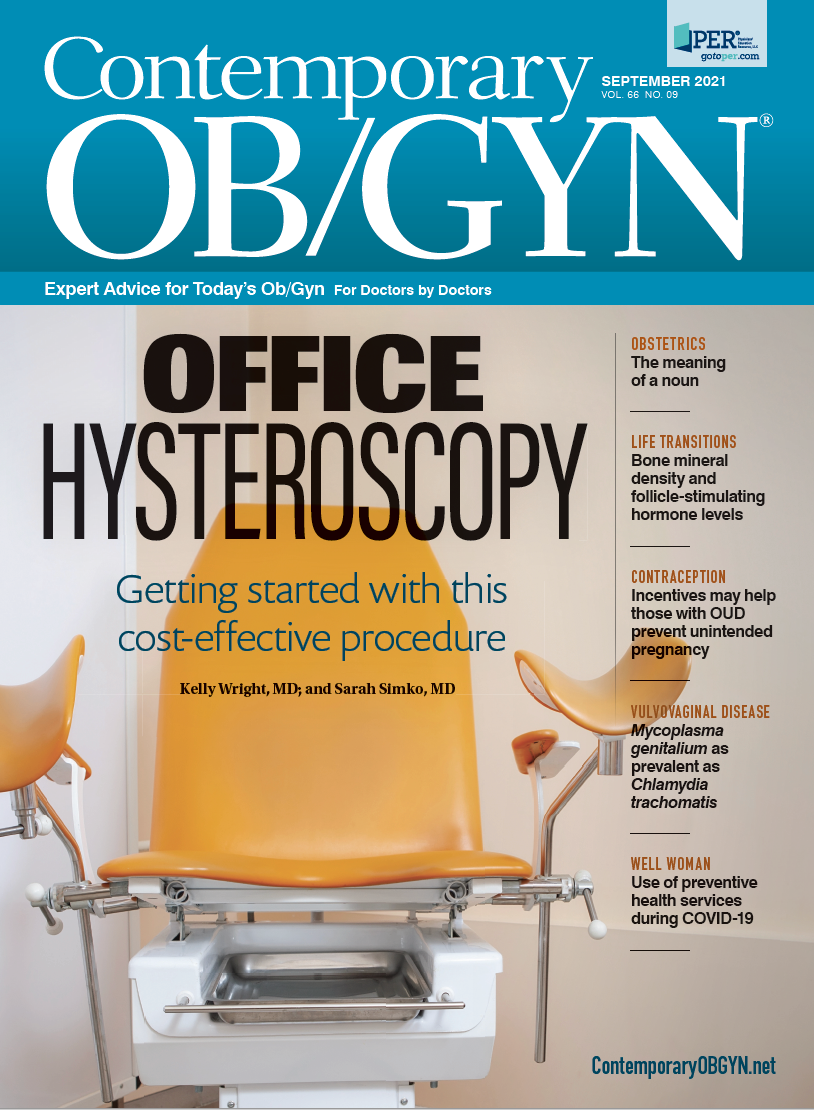Accidental bowel leakage
These tips for the ob-gyn specialist can help patients manage.
Clinical Pearls
- Physicians should screen for accidental bowel leakage through effective history-taking because patients are unlikely to report symptoms despite a significant impact on quality of life.
- A physical examination is paramount in evaluating a patient because the findings of a fistula or rectal prolapse warrant surgical repair.
- Medical management, particularly stool-modifying agents, is often an effective first choice for initial intervention.
- If a patient requires surgical intervention, sacral neuromodulation is a procedure with relatively low morbidity and high success rates.
- The role of anal sphincteroplasty is limited and is usually only performed if temporally proximate to anal sphincter injury, such as following an obstetric injury.
Introduction
Fecal incontinence, preferably referred to as accidental bowel leakage, is the chronic, involuntary loss of solid or liquid stool from the rectum. An estimated 7% to 15% of community-dwelling women experience accidental bowel leakage.1 The prevalence is even higher in older populations and those residing in long-term care facilities.2,3 The prevalence of accidental bowel leakage is difficult to estimate because providers often do not ask about symptoms and patients are reluctant to initiate the conversation.2 For this reason, the prevalence is likely underestimated and the condition underreported.
Patients may not seek help or report symptoms because of embarrassment and fear of stigmatization. However, accidental bowel leakage can have a significant negative impact on a woman’s life. Accidental bowel leakage is associated with self-consciousness, depression, anxiety, social isolation, and increased financial costs.2,4,5
Etiology
Causes of accidental bowel leakage are broadly categorized into neurologic and nonneurologic categories. Neurologic causes include central nervous system diseases, such as dementia and stroke, as well as conditions that affect the peripheral nervous system, such as diabetic neuropathy. Risk factors for accidental bowel leakage vary. Physical damage to the anal sphincter complex increases the risk of accidental bowel leakage. Anal sphincter injuries can be the result of obstetrical delivery or anal procedures such as hemorrhoidectomy or sphincterotomy.6
Underlying gastrointestinal conditions contribute to accidental bowel leakage because of their association with abnormal stooling. Some of these conditions include inflammatory bowel disease, irritable bowel syndrome, constipation, colorectal cancer, and history of bowel resection.
Modifiable risk factors related to a patient’s lifestyle include taking medications associated with loose stools, smoking, obesity, lack of physical activity, and anal intercourse. Nonmodifiable risk factors include older age and a history of pelvic irradiation.6,7
Evaluation
The first step in evaluating patients for accidental bowel leakage is collecting a thorough history. Asking about preexisting medical conditions, current medications, and surgical history helps a provider identify significant risk factors that may be contributing to a patient’s accidental bowel leakage. A complete obstetric history should be obtained, including the number of vaginal deliveries, perineal lacerations, episiotomy, and use of forceps. Because associated pelvic floor disorders such as urinary incontinence and pelvic organ prolapse often co-occur with accidental bowel leakage, the patient should be screened for these conditions as well.7
Figure 1. Bristol Stool Form Scale

Screening for accidental bowel leakage is essential because many patients are not forthcoming with their symptoms or are unaware that what they are experiencing is a diagnosable medical condition.8 When screening patients, questioning should assess the onset, duration, frequency, and timing of symptoms. Details regarding the amount and quality of the stool, as well as the presence of urgency and nocturnal episodes, are important. Utilization of the Bristol Stool Form Scale is helpful when asking patients to describe and categorize their stools (Figure 1). Time should be taken to learn about how the symptoms affect the patient’s quality of life to further guide counseling.
A comprehensive physical examination is the next step in evaluation of accidental bowel leakage. The physical examination begins with visual inspection of the perianal area to look for evidence of stool on the skin or signs of skin irritation. The appearance of the anal opening should be assessed for gaping of the muscles, scarring, or other physical defects.9,10 Special attention should be taken to look for dovetail sign, which is the loss of the anterior perianal folds and is suggestive of an external anal sphincter defect9 (Figure 2).
Figure 2. Dovetail sign with absence of the anterior radial skin creases of the anal verge

After visual inspection, palpation of the anal sphincter should be performed via digital rectal examination. Digital rectal examination evaluates anal sphincter tone and squeeze; weakness can indicate a defect. Digital rectal examination also assesses for occult or gross blood, masses, and fistulae. A vaginal examination should be included to evaluate for signs of prolapse or fistula. Laboratory studies are typically not indicated when evaluating for accidental bowel leakage, except stool studies in patients with chronic diarrhea.9
Further diagnostic testing in the form of anorectal manometry testing, defecography, and anal sphincter imaging are not routinely recommended for the initial workup of accidental bowel leakage. These modalities are generally utilized by specialists for patients who failed initial treatment or have unexplained refractory symptoms.10
Colonoscopy should be considered in patients who present with accidental bowel leakage. A low threshold to proceed with colonoscopy should exist, particularly in patients with alarming symptoms for neoplasm, such as weight loss, melena, hematochezia, changes in bowel habits, and changes in stool caliber.9
Medical Management
When a patient receives a diagnosis of accidental bowel leakage, the initial management should be medical rather than surgical. The importance of skin hygiene and the use of incontinence pads should be addressed with patients. Lifestyle modifications such as smoking cessation, weight loss, and identification and avoidance of dietary triggers can be discussed.11 Scheduled toileting also can be an effective strategy. Scheduled toileting involves attempting a bowel movement at regular intervals throughout the day rather than waiting for an urge or incontinent episode.
Because of the gastrocolic reflex, the ideal time to attempt defecation is 30 minutes after eating. Furthermore, because some toilets are too high for patients to comfortably rest their feet on the floor, use of a stool under the feet while attempting to defecate can also help with rectal emptying and subsequently reduce the leakage of stool.12 Patients should be counseled on how to manage and live with their symptoms while undergoing evaluation.
The primary goal of medical management is to improve the consistency and decrease the frequency of stools. Stool-bulking agents, such as fiber and psyllium, are helpful with improving stool consistency.13 Dietary modification can achieve significant changes in stool consistency by slowly increasing the amount of fiber in the diet. For patients who have diarrhea-predominant accidental bowel leakage, antidiarrheal and antimotility medications such as loperamide can be effective. Laxatives should be utilized for patients with constipation or fecal impaction leading to overflow incontinence.11,13
Although there are somewhat limited data, there is a role for pelvic floor exercises in the management of accidental bowel leakage. The goal of these exercises is to strengthen the anal sphincter complex and levator ani muscles. Although studies have shown improvement in urinary incontinence symptoms with pelvic floor exercises alone, few studies have assessed the role of these exercises in the management of accidental bowel leakage.14
For women whose symptoms do not improve with stool manipulation and self-guided pelvic floor exercises, further management with formal pelvic floor physical therapy can be considered. Pelvic floor physical therapy can be done with or without biofeedback and with or without electrical stimulation. Insufficient evidence exists to conclude which regimen is best.15 Some studies have suggested that pelvic floor exercises with biofeedback are more effective than pelvic floor exercises alone.16
Figure 3. Vaginal bowel control device

Additional nonsurgical options include vaginal bowel control devices and anal plugs. The vaginal bowel control device consists of a balloon insert that is placed in the vagina (Figure 3). A detachable pump inflates the balloon to occlude the rectum to help prevent bowel leakage. The balloon deflates at the time of toileting to allow passage of bowel movements. Some patients have also had success with single-use silicone anal inserts (Figure 4). These inserts are completely removed and disposed of when toileting and subsequently replaced.9,11
Figure 4. Single-use silicone anal insert

Other outpatient procedures used for the treatment of accidental bowel leakage include posterior tibial nerve stimulation. Despite initial promising results in cohort studies, results of recent trials have not found that posterior tibial nerve stimulation is superior to placebo.17 In a recent study, patients treated with peripheral tibial nerve stimulation and sham electrical stimulation had similar outcomes. Of participants, 62% reported a response to peripheral tibial nerve stimulation after 12 weeks compared with 48% in the sham group, a difference that was not statistically significant.18
Surgical Management
Surgical intervention is rarely the first-line management of accidental bowel leakage. The decision to proceed directly to surgical management is typically indicated only when there are findings of a fistula or rectal prolapse.9 Surgical management in the case of failed medical management can be considered although data supporting long-term efficacy are lacking.15 Proceeding with surgical intervention is largely dependent on shared decision-making between the patient and the surgeon.
Sacral neuromodulation is an option for patients desiring surgical management. Sacral nerve stimulation is widely used due to its approval by the United States Food and Drug Administration for use in treating accidental bowel leakage, its relatively low complication profile, and the ability to “trial” the stimulator prior to permanent implantation.9 With sacral nerve stimulation, a wire electrode is surgically placed near the third sacral nerve root, which is involved in bowel control. A neurostimulator is implanted that sends low-voltage energy through the electrode, stimulating the sacral nerve.11
Anal sphincteroplasty, which is the surgical repair of separated anal sphincter muscles, now plays a limited role in managing accidental bowel leakage. Although anal sphincteroplasty may initially improve symptoms of accidental bowel leakage, it often does not provide effective long-term management. Exceptions to this include women who present with cloacallike defects with complete absence of the perineal body.
These types of defects are fistulae because the vaginal and rectal mucosa are in contact with where the perineal body should be. Anal sphincteroplasty is generally most successful if it is performed temporally proximate to anal sphincter injury, such as during the postpartum course following an obstetric injury.19 In contrast to neuromodulation, sphincteroplasty is associated with more postoperative complications, with infection rates of up to 29%.20
Other surgical interventions exist but are less commonly performed and generally limited to a small subset of patients who failed all other management options. Such interventions include artificial anal sphincter placement, transposition of the gracillis muscle, and complete fecal diversion with end colostomy or ileostomy.9
References
- Bharucha AE, Dunivan G, Goode PS, et al. Epidemiology, pathophysiology, and classification of fecal incontinence: state of the science summary for the National Institute of Diabetes and Digestive and Kidney Diseases (NIDDK) workshop. Am J Gastroenterol. 2015;110(1):127-136. doi:10.1038/ajg.2014.396
- Dunivan GC, Heymen S, Palsson OS, et al. Fecal incontinence in primary care: prevalence, diagnosis, and health care utilization. Am J Obstet Gynecol. 2010;202(5):493.e1-493.e6. doi:10.1016/j.ajog.2010.01.018
- Saga S, Vinsnes AG, Mørkved S, Norton C, Seim A. Prevalence and correlates of fecal incontinence among nursing home residents: a population-based cross-sectional study. BMC Geriatr. 2013;13:87. doi:10.1186/1471-2318-13-87
- Brown HW, Wexner SD, Segall MM, Brezoczky KL, Lukacz ES. Quality of life impact in women with accidental bowel leakage. Int J Clin Pract. 2012;66(11):1109-1116. doi:10.1111/ijcp.12017
- Bharucha AE, Zinsmeister AR, Locke GR, et al. Prevalence and burden of fecal incontinence: a population-based study in women. Gastroenterology. 2005;129(1):42-49. doi:10.1053/j.gastro.2005.04.006
- Bharucha AE. Fecal incontinence. Gastroenterology. 2003;124(6):1672-1685. doi:10.1016/s0016-5085(03)00329-9
- Whitehead WE, Borrud L, Goode PS, et al; Pelvic Floor Disorders Network. Fecal incontinence in US adults: epidemiology and risk factors. Gastroenterology. 2009;137(2):512-517, 517.e1-517.e2. doi:10.1053/j.gastro.2009.04.054
- Brown HW, Rogers RG, Wise ME. Barriers to seeking care for accidental bowel leakage: a qualitative study. Int Urogynecol J. 2017;28(4):543-551. doi:10.1007/s00192-016-3195-1
- ACOG Practice Bulletin No. 210: fecal incontinence. Obstet Gynecol. 2019;133(4):e260-e273. doi:10.1097/AOG.0000000000003187
- Costilla VC, Foxx-Orenstein AE, Mayer AP, Crowell MD. Office-based management of fecal incontinence. Gastroenterol Hepatol (N Y). 2013;9(7):423-433.
- Whitehead WE, Rao SSC, Lowry A, et al. Treatment of fecal incontinence: state of the science summary for the National Institute of Diabetes and Digestive and Kidney Diseases workshop. Am J Gastroenterol. 2015;110(1):138-146. doi:10.1038/ajg.2014.303
- Mounsey A, Raleigh M, Wilson A. Management of constipation in older adults. Am Fam Physician. 2015;92(6):500-504
- Bove A, Bellini M, Battaglia E, et al. Consensus statement AIGO/SICCR diagnosis and treatment of chronic constipation and obstructed defecation (part II: treatment). World J Gastroenterol. 2012;18(36):4994-5013. doi:10.3748/wjg.v18.i36.4994
- Scott KM. Pelvic floor rehabilitation in the treatment of fecal incontinence. Clin Colon Rectal Surg. 2014;27(3):99-105. doi:10.1055/s-0034-1384662
- Forte ML, Andrade KE, Butler M, et al. Treatments for Fecal Incontinence. Comparative Effectiveness Review No. 165. (Prepared by the Minnesota Evidence-based Practice Center under Contract No. 290-2012-00016-I.) Agency for Healthcare Research and Quality; 2016. AHRQ Publication No. 15(16)-EHC037-EF. March 2016. Accessed June 11, 2021. https://effectivehealthcare.ahrq.gov/sites/default/files/pdf/fecal-incontinence_research.pdf
- Rao SSC. Current and emerging treatment options for fecal incontinence. J Clin Gastroenterol. 2014;48(9):752-764. doi:10.1097/MCG.0000000000000180
- Leroi AM, Siproudhis L, Etienney I, et al. Transcutaneous electrical tibial nerve stimulation in the treatment of fecal incontinence: a randomized trial (CONSORT 1a). Am J Gastroenterol. 2012;107(12):1888-1896. doi:10.1038/ajg.2012.330
- Neuromodulation for accidental bowel leakage (NOTABLe). ClinicalTrials.gov. Updated May 14, 2021. Accessed May 22, 2021. https://clinicaltrials.gov/ct2/show/results/NCT03278613
- Brown HW, Dyer KY, Rogers RG. Management of fecal incontinence. Obstet Gynecol. 2020;136(4):811-822. doi:10.1097/AOG.0000000000004054
- Berg MR, Gregussen H, Sahlin Y. Long-term outcome of sphincteroplasty with separate suturing of the internal and the external anal sphincter. Tech Coloproctol. 2019;23(12):1163-1172. doi:10.1007/s10151-019-02122-7

S4E1: New RNA platform can predict pregnancy complications
February 11th 2022In this episode of Pap Talk, Contemporary OB/GYN® sat down with Maneesh Jain, CEO of Mirvie, and Michal Elovitz, MD, chief medical advisor at Mirvie, a new RNA platform that is able to predict pregnancy complications by revealing the biology of each pregnancy. They discussed recently published data regarding the platform's ability to predict preeclampsia and preterm birth.
Listen
